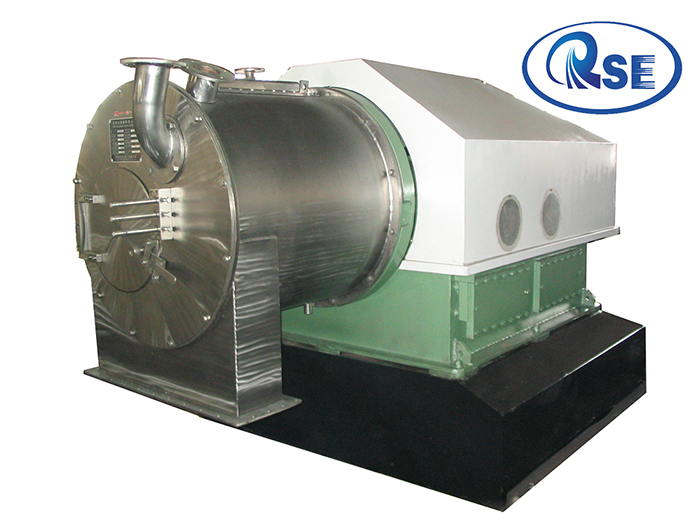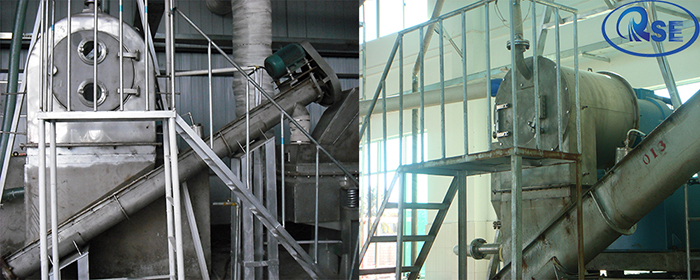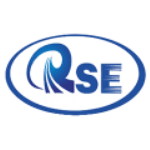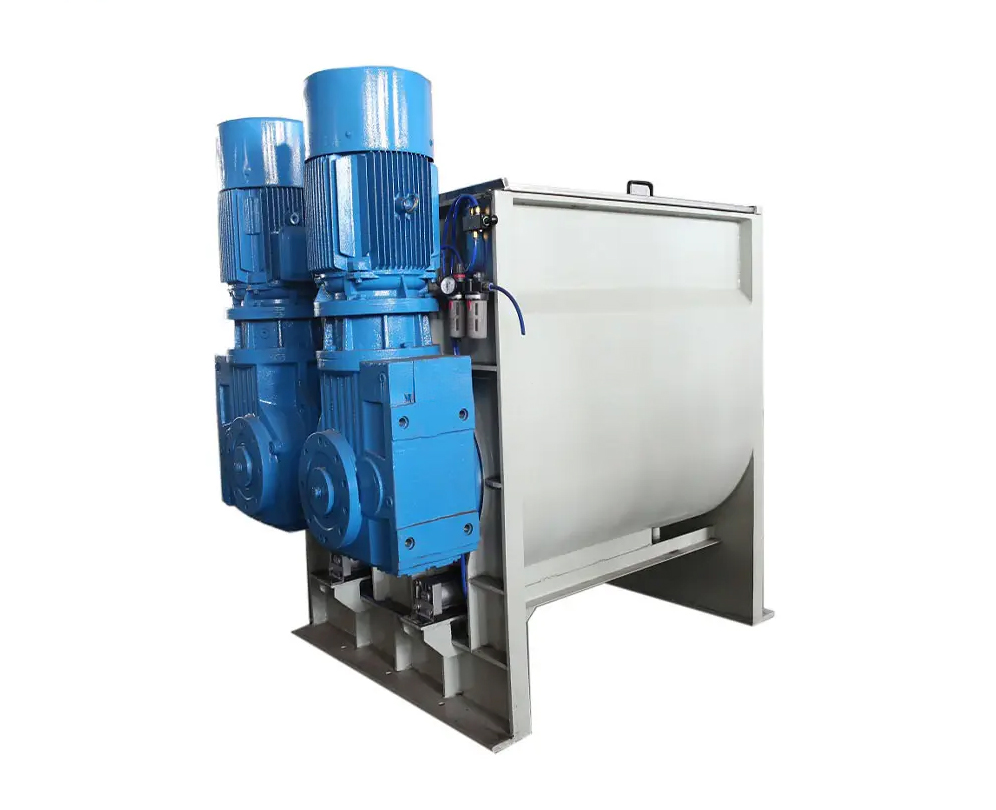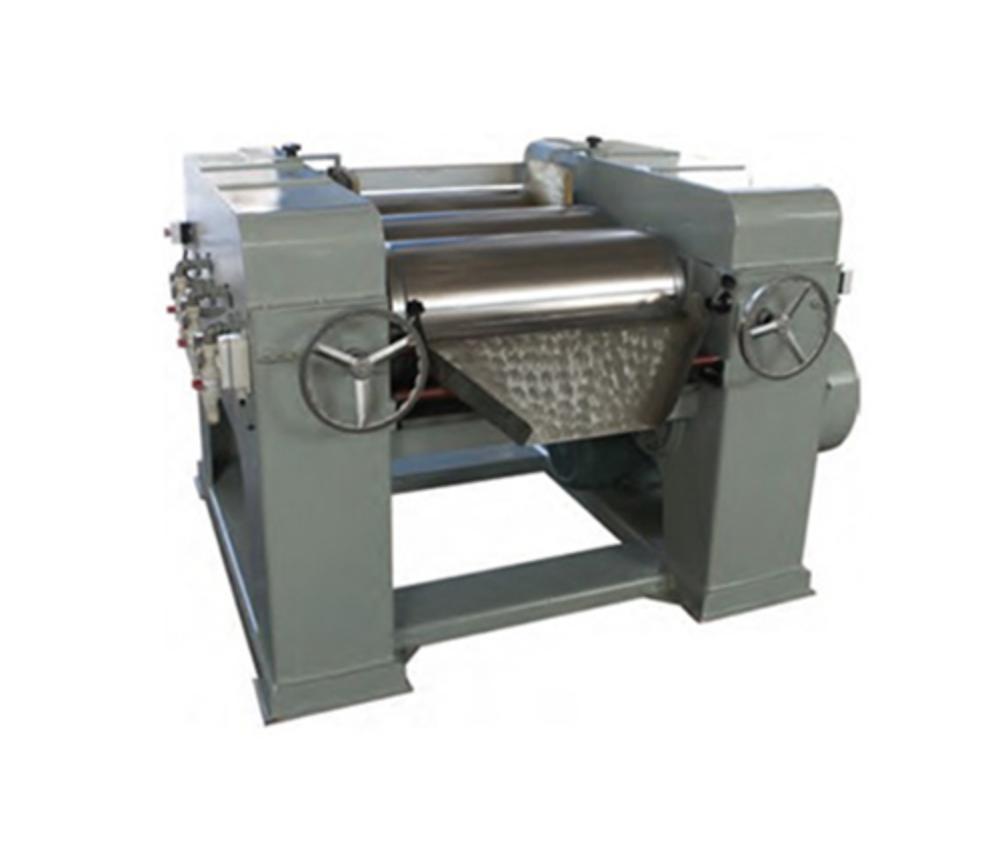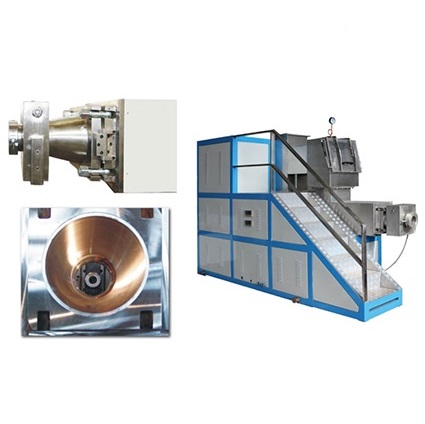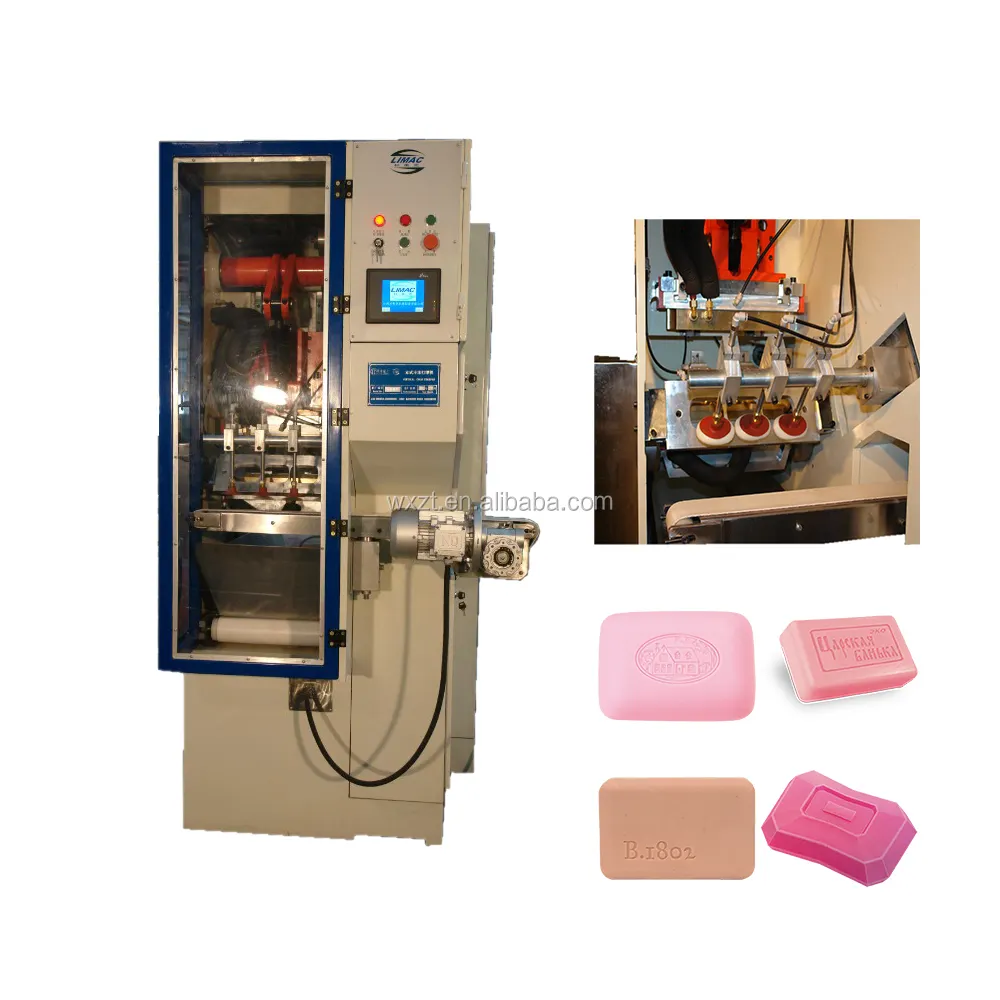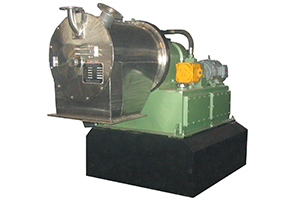Two-stage pushing centrifuge is a kind of filter centrifuge with continuous feeding and intermittent discharging of filter cake after separation. This centrifuge combines the benefits of continuous operation with the capability of achieving low moisture content in the solid products. It is commonly used in industries such as chemical processing, pharmaceutical manufacturing, and salt production.
Product Description
The double-stage pusher centrifuge, a leader in modern industrial separation technology, is designed with the ingenuity of its unique double-drum system, an innovation that not only greatly expands the boundaries of centrifuge applications, but also significantly improves the efficiency and precision of separating solid and liquid mixtures. The system cleverly divides the centrifugal separation process into two closely related but functionally distinct phases, each carefully optimized to ensure that the material is separated efficiently and completely under the most suitable conditions.
In the first stage, the preliminary dewatering stage, the centrifuge utilizes the powerful centrifugal force generated by the high speed rotation to force the liquid components of the mixture to rapidly peel away from the surface of the solid particles and move towards the outer layers, creating a preliminary solid-liquid separation. This stage pays special attention to removing most of the free water quickly and effectively, laying a solid foundation for subsequent processing. At the same time, through precise control of rotational speed, feed volume and screen aperture and other parameters, it can ensure that the solid particles can achieve the expected dewatering effect under the premise of maintaining certain structural integrity.
Immediately thereafter, the material enters the second stage – deep drying and fine separation stage. Here, the centrifuge continues to give full play to its excellent performance, utilizing a finer screen structure and high-precision operation control to further process the material after preliminary dewatering. The rotational speed and internal flow field design of the second stage drum are precisely calculated to minimize residual moisture in the filter cake while protecting the solid particles from damage and achieving higher quality drying results. This process not only improves the final moisture content index of the product, but also significantly improves the appearance and physical properties of the product, providing a higher quality raw material for downstream processing.
This classification and processing strategy of the two-stage pusher centrifuge not only improves the separation efficiency, but also enhances the flexibility and adaptability of the equipment, which is able to cope with a wide range of mixtures with different properties. Its high degree of automation, easy operation, low maintenance costs, but also won the favor of users in many industries. From chemical, pharmaceutical to food, environmental protection and other fields, double-stage pusher centrifuges are contributing to the transformation and upgrading of modern industrial production and high-quality development with their excellent separation performance and stable and reliable working performance.
In addition, the two-stage pusher centrifuge also demonstrates its excellent environmental protection and energy saving characteristics. By precisely controlling the separation process, it reduces energy consumption and effectively avoids possible environmental pollution during the separation process. Its high separation efficiency also means that fewer resources, such as washing water and heat, are required for subsequent processing, thus realizing green production. The compact and modular design of the equipment facilitates maintenance and upgrading, which reduces operating costs throughout the life cycle and further enhances the economic and environmental benefits of the enterprise. These advantages make the two-stage pusher centrifuge the preferred equipment in the modern industrial separation field.
Key Features
- Continuous Operation with Intermittent Discharging
- Description: The centrifuge operates with continuous feeding of materials and intermittent discharging of the filter cake. This design allows for uninterrupted processing and efficient handling of large volumes of material.
- Advantages:
- High Production Capacity: Enables large-scale processing and high throughput.
- Operational Efficiency: Reduces downtime associated with batch processing.
- Large Production Capacity
- Description: The centrifuge is designed to handle substantial quantities of material, making it suitable for industrial-scale operations.
- Advantages:
- Increased Output: Meets the demands of high-capacity production environments.
- Cost-Effective: Reduces the need for multiple units, optimizing space and resources.
- High Separation Factor
- Description: The centrifuge achieves a high separation factor, allowing for effective separation of solids from liquids. This ensures that the filter cake is thoroughly dewatered.
- Advantages:
- Effective Dehydration: Minimizes the moisture content in the filter cake.
- Enhanced Purity: Produces high-quality solid products with low residual moisture.
- Two-Stage Dehydration
- Description: The two-stage dewatering system, as a highlight of centrifuge technology, realizes the unprecedented deep dewatering effect on the material through the well-designed two independent and interconnected drum stages. This staged processing not only reflects the finesse and ingenuity of the technology, but also demonstrates multiple significant advantages in practical application.
- Advantages:
- Thorough Dehydration: the two-stage dewatering ensures that the filter cake can reach a very low moisture content. In the first stage drum, the material undergoes preliminary centrifugal action, and most of the free water is quickly eliminated, which lays a solid foundation for the following deep dewatering. Subsequently, in the second drum stage, the material is dried more thoroughly using a finer screen structure and optimized operating conditions, until the residual moisture is reduced to a minimum. This process not only improves the dewatering efficiency, but also significantly increases the dryness of the product, which meets the stringent requirements of many industries for high-quality raw materials.
- Improved Quality: the two-stage dewatering technology greatly improves the separation quality. By processing in stages, each stage can be precisely regulated for the specific properties of the material, thus avoiding the breakage and deformation of solid particles to the greatest extent possible, and maintaining the integrity and physical properties of the product. At the same time, due to the more thorough dehydration process, the purity and homogeneity of the resulting filter cake have also been significantly improved, creating more favorable conditions for subsequent processing and utilization.
- Effective Washing and Discharge
- Description: An effective washing and discharging system is an integral part of the centrifuge’s design, a feature that not only enhances the final quality of the product, but also promotes the maximum utilization of resources. Specifically, the centrifuge is equipped with an advanced washing device, which is capable of fine and thorough cleaning of solid products according to the characteristics of the material and process requirements, effectively removing impurities and residues adhering to the surface.
- Advantages:
- High Purity: Through a precise washing process and proper selection of washing liquids, centrifuges are able to penetrate deep into the tiny crevices of solid particles and remove hidden impurities one by one, thus significantly improving the purity of the product. This is extremely important for industries that require high cleanliness raw materials, such as pharmaceuticals, food and chemicals. High purity products not only meet stricter quality standards, but also reduce unnecessary loss and contamination during subsequent processing.
- Efficient Recovery: During the washing process, centrifuges are able to effectively separate the washing liquid from the mother liquor and discharge or recycle them separately. This not only helps to reduce wastewater discharge and the risk of environmental pollution, but also enables the recycling of valuable liquid resources. For washing liquids containing expensive solvents or reusable components, this function undoubtedly brings significant economic and environmental benefits to enterprises.
- Low Power Consumption
- Description: The centrifuge is designed to operate with minimal power consumption, making it energy-efficient.
- Advantages:
- Cost Savings: Reduces operational costs associated with energy usage.
- Sustainability: Supports environmentally friendly manufacturing practices.
- Uniform Processing
- Description: The centrifuge ensures uniform processing of materials, resulting in consistent product quality.
- Advantages:
- Consistent Output: Produces filter cakes with uniform properties and moisture content.
- Reliable Performance: Provides dependable and predictable results.
- Moisture Content
- Description: The centrifuge is capable of achieving a moisture content of less than 5% in the final product.
- Advantages:
- High Efficiency: Ensures that the filter cake is adequately dried for further processing or use.
- Product Quality: Meets stringent quality standards for low moisture content.
Technical Specifications
- Model: Two-Stage Pushing Centrifuge
- Separation Factor: High, customizable based on requirements
- Capacity: Varies based on model and application
- Power Consumption: Low, energy-efficient design
- Material of Construction: Typically stainless steel for durability and resistance to corrosion
- Moisture Content of Filter Cake: Less than 5%
- Washing Capability: Effective, with separate discharge of washing liquid and mother liquor
- Operational Mode: Continuous feeding with intermittent discharging
Applications
- Chemical Processing:
- Uses: Separation of chemical compounds, dehydration of chemical slurries.
- Benefits: Provides efficient separation and dehydration, enhancing the quality of chemical products.
- Pharmaceutical Manufacturing:
- Uses: Filtration and dehydration of pharmaceutical intermediates and final products.
- Benefits: Ensures high purity and low moisture content in pharmaceutical products.
- Salt Production:
- Uses: Dehydration of salt crystals, ensuring low moisture content.
- Benefits: Produces high-quality salt with minimal residual moisture, suitable for further processing or packaging.
- Food Processing:
- Uses: Separation and dehydration of food ingredients and additives.
- Benefits: Enhances the quality and shelf-life of food products by removing excess moisture.
Installation and Maintenance
- Installation:
- Site Preparation: Ensure that the installation site is clean, level, and has adequate space for the centrifuge and associated infrastructure.
- Assembly: Follow manufacturer guidelines for proper assembly and integration with existing systems.
- Calibration: Calibrate the centrifuge to ensure accurate operation and optimal performance.
- Maintenance:
- Routine Cleaning: Regularly clean the centrifuge to prevent residue buildup and maintain hygiene.
- Inspection: Conduct periodic inspections to check for wear, damage, and overall performance. Replace worn or damaged parts as needed.
- Lubrication: Apply lubrication to moving parts such as gears and bearings to ensure smooth operation and prevent friction.
- Adjustment: Monitor operational settings and adjust as needed to maintain optimal performance and product quality.
Safety and Compliance
- Safety Features:
- Overpressure Protection: Includes safety mechanisms to prevent damage from excess pressure.
- Leak Detection: Equipped with sensors to detect and address potential leaks, ensuring safe operation.
- Compliance:
- Industry Standards: Adheres to international standards for safety and quality, ensuring reliable and compliant operation.
- Environmental Regulations: Designed to minimize environmental impact and support sustainable manufacturing practices.
